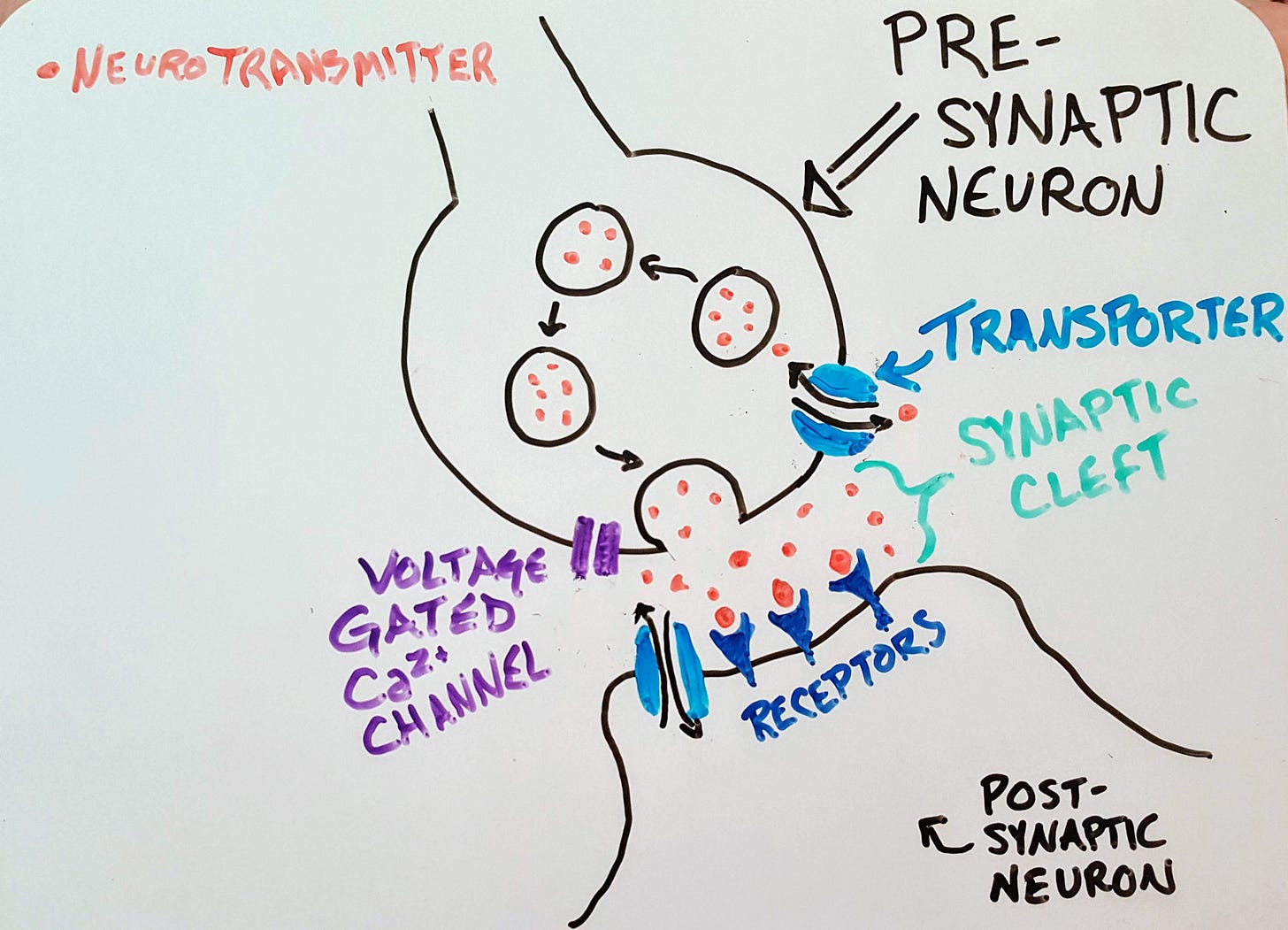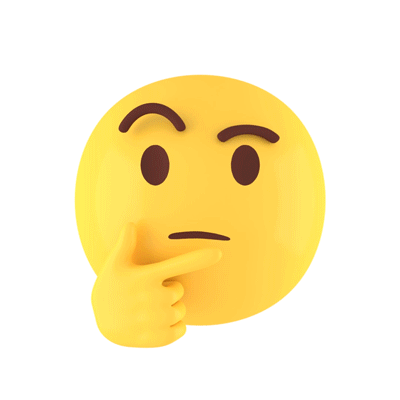Chapter: Pathophysiology & Classifcation of PoTS (2021) pt III: Hyperadrenergic POTS
Our norepinephrine needs to chill.
This chapter, in the book Postural Tachycardia Syndrome (2021), written by Matthew G. Lloyd & Satish R. Raj, talks about subtypes of Postural Orthostatic Tachycardia Syndrome (POTS). I have previously summarized Neuropathic POTS & Hypovolemic POTS.
The Hyperadrenergic State
Hyper- over/above
adrenergic - effecting (usually “enhancing or mimicking the effects of”) adrenaline (aka epinephrine) or noradrenaline (aka norepinephrine) in the body.
Approximately 50% of POTS patients appear to have “hyper POTS” (the subtypes are not exclusive, so many, if not most, people present with more than one type).
At least, this is true according to the ~wide definition~ of hyperadrenergic POTS:
having a plasma norepinephrine (NE) level ≥600 pg/mL when standing
a ≥10 mmHg increase in systolic arterial pressure when standing
or “symptoms of sympathetic activation during [standing] (e.g. palpitations, tremulousness, anxiety)”
These patients also show a systolic blood pressure “overshoot” during the Valsalva maneuver.
However, some “purists” disagree with that criteria, and believe that less than 10% of those widely defined POTsies truly have hyperadrenergic POTS. Their stricter criteria is:
plasma norepinephrine (NE) levels at or above 1000 pg/mL when standing
with a large increase in BP when standing
These purists believe that hyper POTS is caused by “excessive” central sympathetic nervous system response &/or a lack of baroreflex blood pressure buffering.
Back to the ~wider definition~ of hyper POTS, the authors say that the hyperadrenergic state is probably caused by reduced vasoconstriction ability because of underlying peripheral neuropathy, &/or it may be caused by, again, “excessive” sympathetic activity in response to hypovolemia.
So, basically hyper POTS can likely be secondary to neuropathic- or hypovolemic POTS, and “[t]hus, these patients may display an otherwise normal autonomic response to other primary physiological deficits.”
“Excessive” sympathetic activity might also be related to elevated levels of interleukin-6, the presence of which increases sympathetic activation and can thus cause a “positive feedback cycle” of sympathetic tomfoolery (and our suffering!)
Hyperadrenergic State: Norepinephrine Transporter (NET) Deficiency
Though we usually think of the hyperadrenergic state as having excessive sympathetic nervous system activity with an increase of norepinephrine (NE), there’s another way that some POTS patients may have increased NE levels.
So, if your NE vacuums are borked, then you’re going to have a whole bunch of extra NE sitting around, causing trouble… especially high standing heart rates.
What is a Norepinephrine Transporter (NET)?
NE transporters (NET) essentially suck up extra NE that’s been released into the synapse. Actually, you know what, here.. i drew u a pic! of a synapse! (really i copied the wiki picture, lol).
So! Let’s say all those dots are norepinephrine (NE). See my blue TRANSPORTER circley thing? That’s the NET, where NE is supposed to go from that synaptic cleft back into that nerve cell to be recycled and sent out again at the proper time.
If your transporter isn’t working right, your synaptic cleft is gonna get crowded! Your body is going to have too much NE! You’re going to be POTSie as heck!
Scientifically speaking, the blue TRANSPORTER thing in my pretty pretty diagram is called a Norepinephrine Transporter (NET).
So: NET is basically a vacuum on the first nerve cell, there to suck up (via a sodium gradient on the membrane) all the leftover NE that the second nerve cell’s receptors didn’t use (which is about 90% of the NE released) and which are now is just cluttering up the place.
NET thus plays an important part in sympathetic activation because it helps control norepinephrine (NE) levels, and NE levels effect orthostatic tachycardia.
(While looking stuff up, wiki tells me that NET can also suck up dopamine, and the dopamine transporter (DAT) can also suck up NE! But our current chapter doesn’t talk about that so I’ll just leave it at that for now)
NET Deficiency
Now, for some hyper POTSies, their issue may not be that their body is *producing* too much norepinephrine (NE), but that their body isn’t reabsorbing it and recycling it properly. And all that NE laying around causes the heart rate to jump when a person is standing (orthostatic tachycardia).
Though a loss-of-function mutation in the NET gene SLC6A2 has been found in one family, it hasn’t been found in others. However, vein biopsies and cultured leukocytes from hyper-POTS patients have found reduced NET expression despite not having that mutation, so it seems that something is going on there, at least for some hyper-POTSies.
“Bayles and colleagues identifed epigenetic modulation of NET expression via histone acetylation modifcation and binding of a repressive regulatory complex (methyl-CpG binding protein 2) to the SLC6A2 gene.
NET expression in PoTS (and other conditions) may also be partly explained by modulation by microRNAs.”
Nerdy Translation: Even if there are no mutations on the NET gene itself, they’ve found some epigentic changes that effect its behavior.
Also, this seems important:
“Given the well-documented RAAS dysfunction in PoTS, it is notable that angiotensin II regulates NET expression and function via multiple pathways”
Norepinephrine Transporter (NET) + Drugs
“The pharmacological treatment of neuropsychiatric disorders involves a host of drugs that inhibit NET function, including tricyclic antidepressants, NET inhibitors such as atomoxetine (Straterra) or reboxetine (Edronax), and serotonin-norepinephrine reuptake inhibitors such as duloxetine (Cymbalta) and venlafaxine (Effexor).”
“…a double-blind, placebo-controlled trial demonstrated that acute NET inhibition with atomoxetine in PoTS patients worsened orthostatic tachycardia and symptoms in PoTS”
The Straterra one is interesting to me because of the connection between ADHD & EDS.. and then EDS & Dysautonomia. It might be worth noting if you have ADHD! And of course, if you are on any of the others for any reason.
The authors point out that the reuptake of norepinephrine (NE) is higher in the heart than elsewhere, so NET inhibiting medications might have a greater effect on the heart’s NE levels than on the NE levels elsewhere in the body.
“Medications inhibiting NET should therefore be used with caution in PoTS patients.”
Personally and anecdotally, a number of POTSies & I on twitter were discussing how we’re on venlafaxine and haven’t noticed it affecting our POTS. We might just be a selection of non-hyper-POTSies? Idk. (I’ve never had my NE checked..) But just saying, don’t immediately go out and demand a change in your meds. Talk with your POTS drs about it and see if they think you should talk to your psychiatrist/prescribing Dr about trying a different med instead.
Next up: Immune-mediated POTS!
Comments are open for discussion, as well as if you have a correction or clarification of anything in this post!

